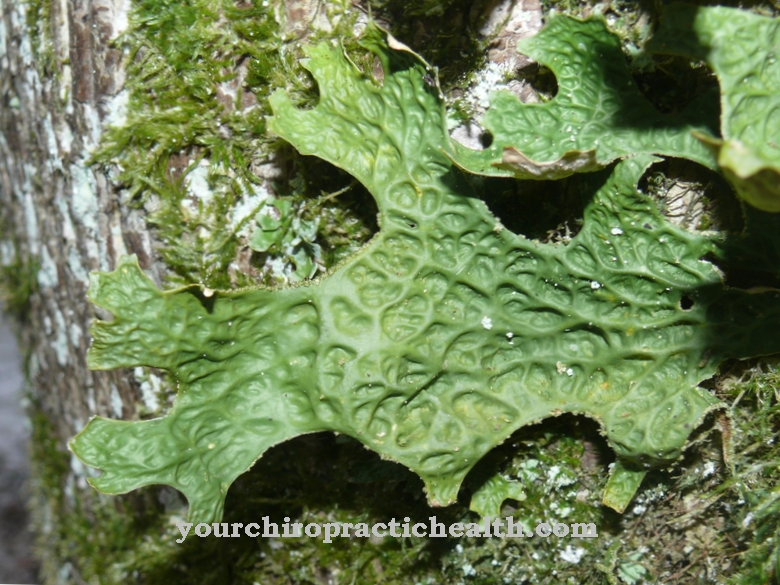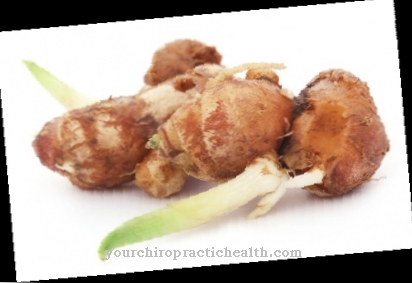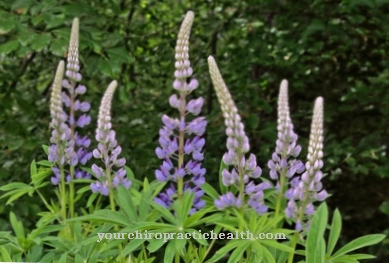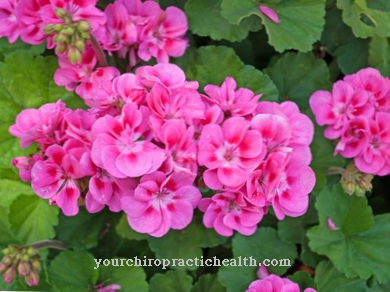Both the seeds and leaves and flowers, buds and bark of the buckeye are used for the manufacture of medicinal drugs and cosmetic products. Classic areas of application include weak veins with their pronounced symptoms, hemorrhoids and swellings as well as inflammatory diseases in the gastrointestinal tract.
Occurrence and cultivation of the horse chestnut

In autumn, the fruits, also known as chestnuts, have ripened in their green and prickly shell to such an extent that they separate from the tree due to natural gravity and fall to the ground. The brown, smooth chestnuts usually slip out of the cracked casing as a result of the impact: They are the seeds of the horse chestnut.
The chestnut trees originally come from the Balkans and were brought to all of Central Europe via Istanbul (then Constantinople) in the 16th century, where they are planted on streets and avenues, in parks and beer gardens, but also live as a wild variant. The horse chestnut was named Medicinal Plant of the Year in 2008 because of its diverse medicinal properties.
Effect & application
The horse chestnut is offered in a variety of different forms of application, depending on its intended use. The dark brown seeds of the plant are used for this, but also the leaves or flowers and the bark of the tree. Typical is the dosage form as a liquid extract or tincture, in which the dry extract of the medicinal plant is mixed with a certain proportion of water or alcohol.
The liquids can - depending on their mixing ratio - be used both internally (by ingestion) and externally (for example by rubbing in). A typical medicinal preparation of the horse chestnut is also the decoction: Here the medicinal plant is placed in water at different temperatures and then brought to the boil. The resulting liquid is used as a bath for certain parts of the body, as a rinse or for compresses.
Medicinal tea can also be made from the leaves of the horse chestnut. If you make the tea from chestnut leaves you have collected yourself, you make sure that the leaves are not attacked by pests. In phytotherapy, the dry extract of the seed is often used for internal use. Dragees with horse chestnut extract are also typical medical products. In addition to the classic tinctures, there are also ointments with added chestnuts.
There are some special forms of administration for specific areas of the body: The product range here ranges from mouth rinses to foot baths or bath additives to products that promote healing for the scalp. In addition to medicinal products, the chestnut has also become a traditional classic in the field of natural cosmetics. For the external treatment of various parts of the body, the horse chestnut is also used as an additive in ointments or creams.
The alternative medical preparations also use the natural healing power of the horse chestnut: In homeopathy, for example, the chestnut occurs in potentised form in globules and is a tried and tested remedy in Bach flower therapy. White Chestnut is made from the flower of the horse chestnut, while Chestnut Bud is made from the bud of the medicinal plant.
Importance for health, treatment & prevention
The active ingredients of the horse chestnut are used in numerous medically relevant diseases and complaints, but their main area of application is venous disorders. This is mainly due to the ingredient aescin, which has anti-inflammatory and dehydrating effects. It has been proven to strengthen the vessels and counteract blood clotting, so that the horse chestnut can also be used effectively for the prophylaxis of leg vein thrombosis due to its ability to accelerate blood flow in the vein.
An example of the preventive application is the rubbing in of the legs before long air travel, with which edema, i.e. the accumulation of fluid, in the leg area can be prevented. Classic areas of application with regard to support during therapy are varicose veins and circulatory disorders. In the case of swollen extremities, especially the accumulations of water in the area of the ankles, which are characteristic of venous disorders, the aescin drains the affected tissue.
This will reduce the swelling and can also help against other typical symptoms of venous weakness such as heaviness in the legs, calf cramps or itching. If an inflammatory skin change has already occurred due to the venous insufficiency, a compress with the extract of the horse chestnut alleviates the associated symptoms.
The horse chestnut is also a natural means of application for hemorrhoids due to its antibacterial and decongestant effects on the skin and blood vessels. Another field of application is the treatment of swellings or bruises caused by accidents or operations. As part of internal use, preparations with the horse chestnut are used for various clinical pictures in the internal or gynecological area that are associated with inflammation or bleeding.
Typical examples are inflammation or ulceration in the stomach and duodenum or bleeding in the uterus. In the naturopathic field, the horse chestnut is also used for psychological problems. In Bach flower therapy, for example, White Chestnut is used for compulsive thought patterns, while the horse chestnut bud, Chestnut Bud, is used for learning disorders. The homeopathic remedy Aesculus is used in addition to a large number of the diseases described above, such as venous disorders, hemorrhoids or ulcers, as part of the stabilization of the circulation.













.jpg)

.jpg)
.jpg)











.jpg)